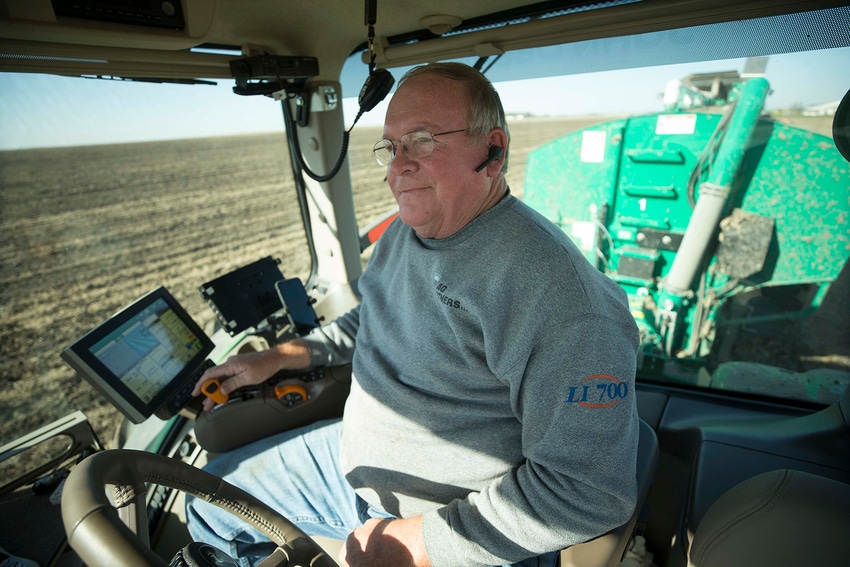Legislative Watch: Census of Agriculture highlights; checkoff legislation; Canada to modify retaliation list; disaster assistance stalled.

This week the USDA’s National Agricultural Statistics Service released the “2017 Census of Agriculture.” Compared to the last Census in 2012, the number of farms continued to decrease and the size increased. The Census found middle-sized farms decreased while there was an increase in small and large operations.
The Census, completed every five years, provides the most comprehensive information on demographics, economics, land and activities on U.S. farms and ranches. It provides information at the national, state and local level.
Some key highlights from USDA include:
There are 2.04 million farms and ranches (down 3.2% from 2012) with an average size of 441 acres (up 1.6%) on 900 million acres (down 1.6%).
The 273,000 smallest (1-9 acres) farms make up 0.1% of all farmland while the 85,127 largest (2,000 or more acres) farms make up 58% of farmland.
Just 105,453 farms produced 75% of all sales in 2017, down from 119,908 in 2012.
Of the 2.04 million farms and ranches, the 76,865 making $1 million or more in 2017 represent just over two-thirds of the $389 billion in total value of production while the 1.56 million operations making under $50,000 represent just 2.9%.
Farm expenses are $326 billion with feed, livestock purchased, hired labor, fertilizer and cash rents topping the list of farm expenses in 2017.
Average farm income is $43,053. A total of 43.6% of farms had positive net cash farm income in 2017.
Ninety-six percent of farms and ranches are family owned.
Farms with internet access rose from 69.6% in 2012 to 75.4% in 2017.
A total of 133,176 farms and ranches use renewable energy producing systems, more than double the 57,299 in 2012.
In 2017, 130,056 farms sold directly to consumers, with sales of $2.8 billion.
Sales to retail outlets, institutions and food hubs by 28,958 operations are valued at $9 billion.
The first Census of Agriculture was conducted in 1840. After 1920, it was conducted every four to five years. Since 1982 the Census has been conducted every five years.
Additional Census highlights will be in next week’s column.
Checkoff reform legislation introduced
Sens. Mike Lee (R-UT), Cory Booker (D-NJ), Rand Paul (R-KY) and Elizabeth Warren (D-MA) have introduced the “Opportunities for Fairness in Farming Act (OFF Act) of 2019.” They argue there is a need for greater transparency and accountability for federal commodity checkoff programs.
According to the Senators the legislation would:
Clarify and fortify the prohibition on checkoff programs from contracting with organizations that lobby on agricultural policy.
Establish program standards that prohibit anti-competitive behavior and engaging in activities that may involve a conflict of interest.
Require transparency through publication of checkoff program budgets and expenditures, and means for audits of compliance.
Similar legislation was considered in the previous Congress.
Voluntary checkoffs
Sens. Mike Lee (R-UT) and Rand Paul (R-KY) have introduced legislation, “Voluntary Check-Off Program Participation Act,” that would make all federal checkoffs voluntary.
“If farmers and ranchers want to get together and pool their resources to better promote their products, then that is the free market at its best,” Lee says. “But as soon as the power of the federal government is used to force people into a program they do not want to participate in, then that is crony capitalism at its worst.”
Canada to modify retaliation list
Canada plans to modify its list of U.S. products subject to tariffs since President Trump has not removed tariffs on Canadian steel and aluminum. Canadian Ambassador to the United States, David MacNaughton, speaking before the North American Agricultural Journalists said that pork, poultry, ethanol, apples and wine are possible items to be subject to the tariffs. Currently, Canada imposes tariffs on approximately $15 billion of U.S. products.
Mexico is expected to change its list of products, subject to tariffs, this spring.
Disaster assistance stalled
While the huge storm hit the Great Plains and Midwest this week and with farmers from the Southeast still waiting on disaster relief for last year’s storms, efforts to pass a disaster relief bill have stalled over disagreements over the level of funding for Puerto Rico. Trump has been objecting to providing additional funds for Puerto Rico while Democrats argue for additional support. More and more members and agricultural organizations are urging the White House and Congressional leaders to reach an agreement soon.
Source: P. Scott Shearer, who is solely responsible for the information provided, and wholly owns the information. Informa Business Media and all its subsidiaries are not responsible for any of the content contained in this information asset.
About the Author(s)
You May Also Like



